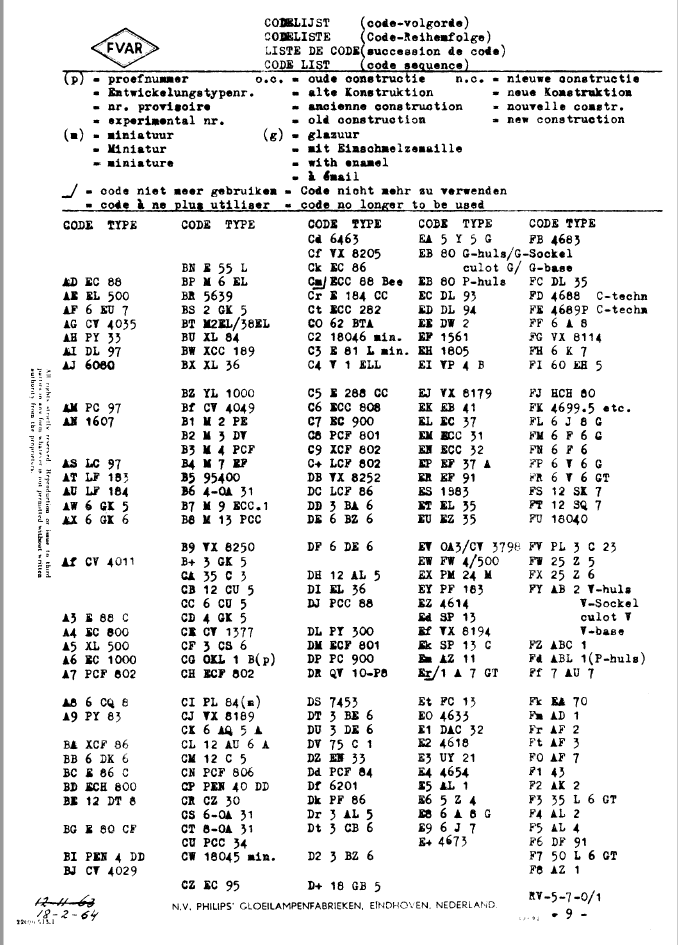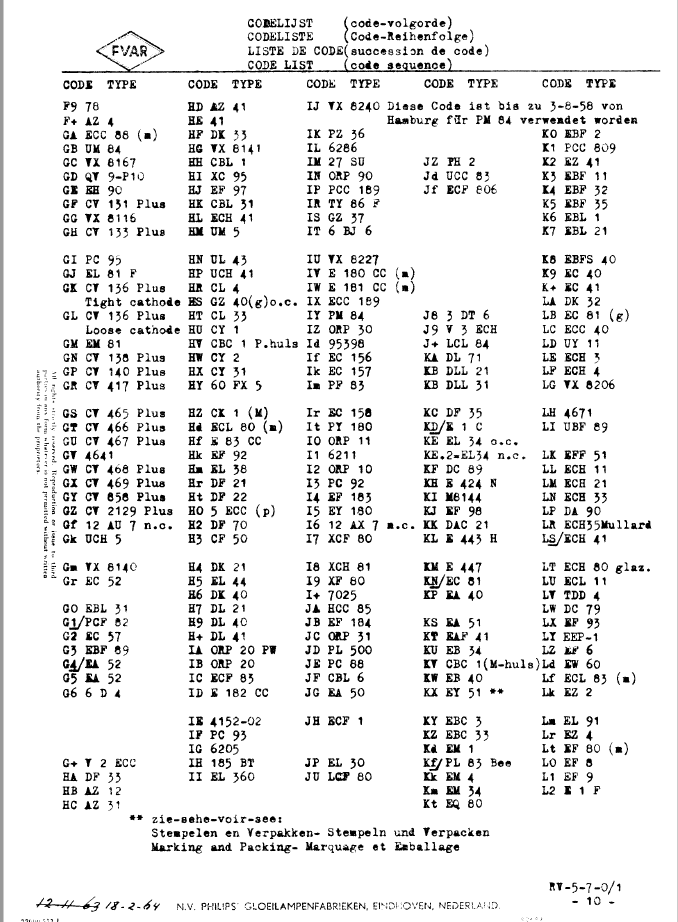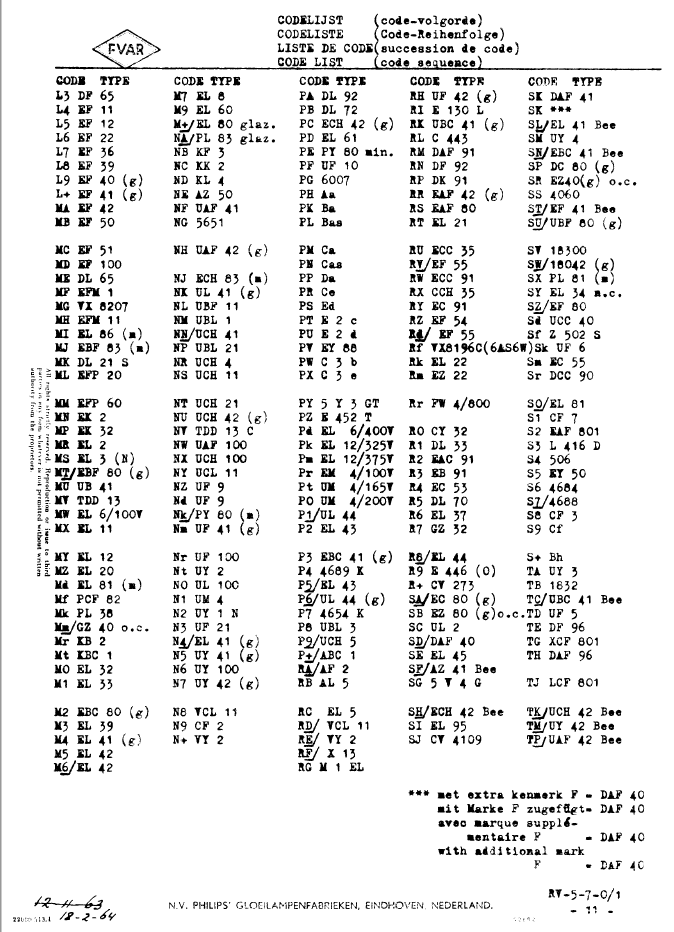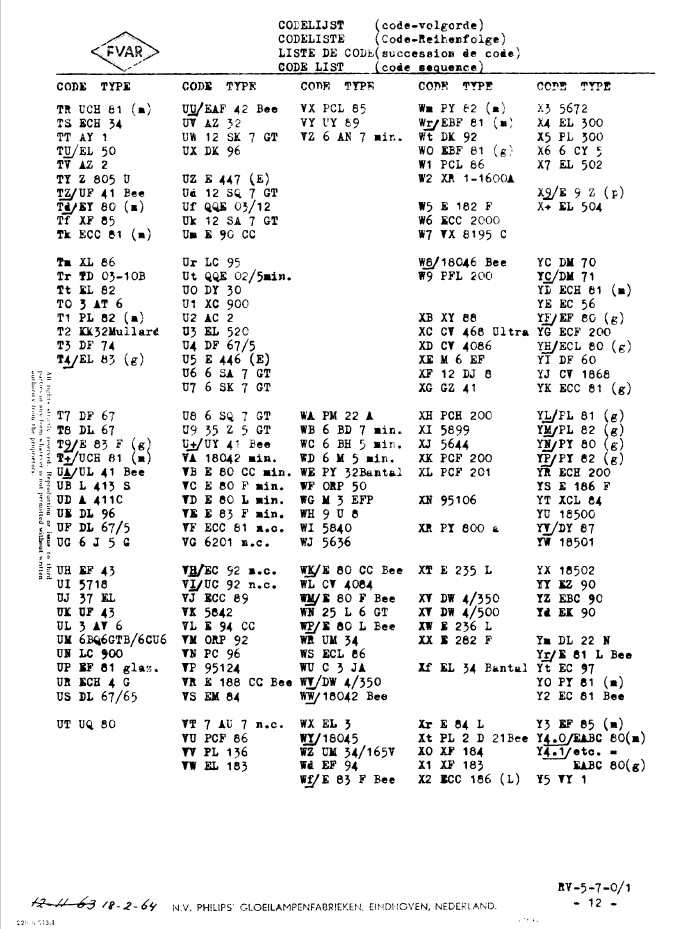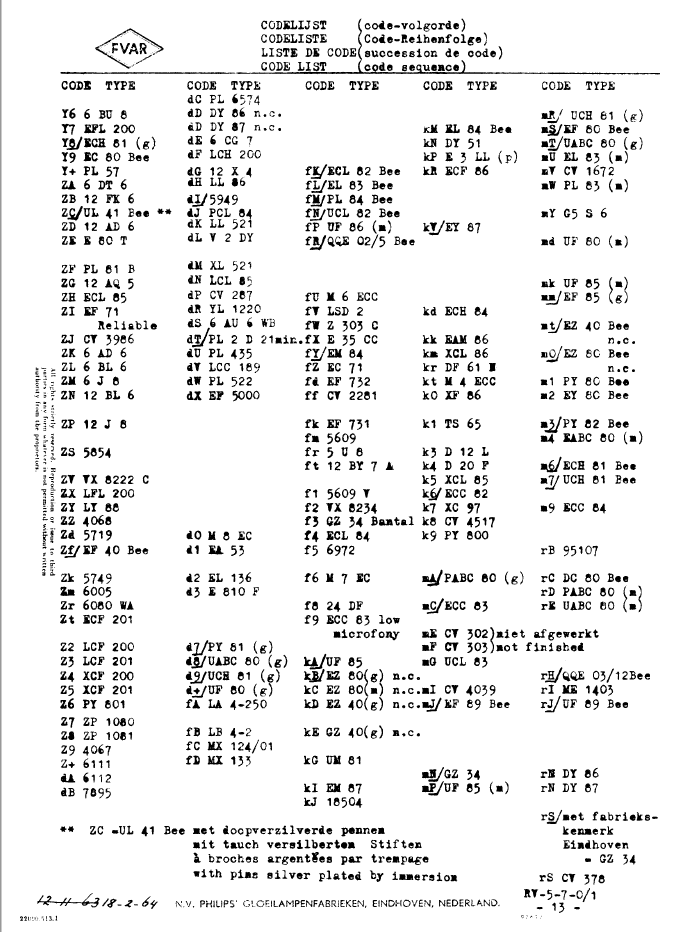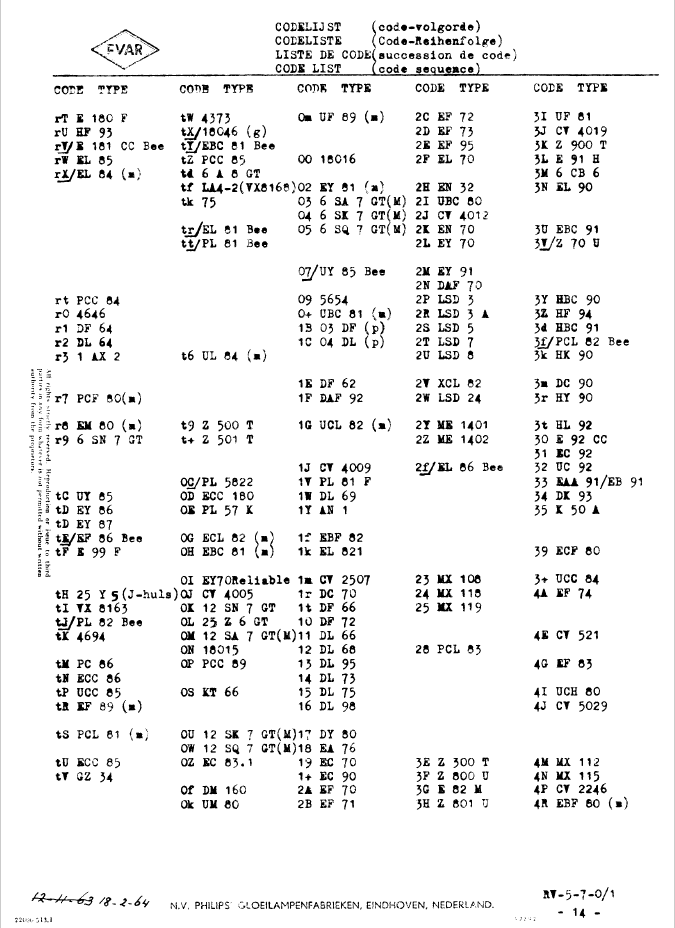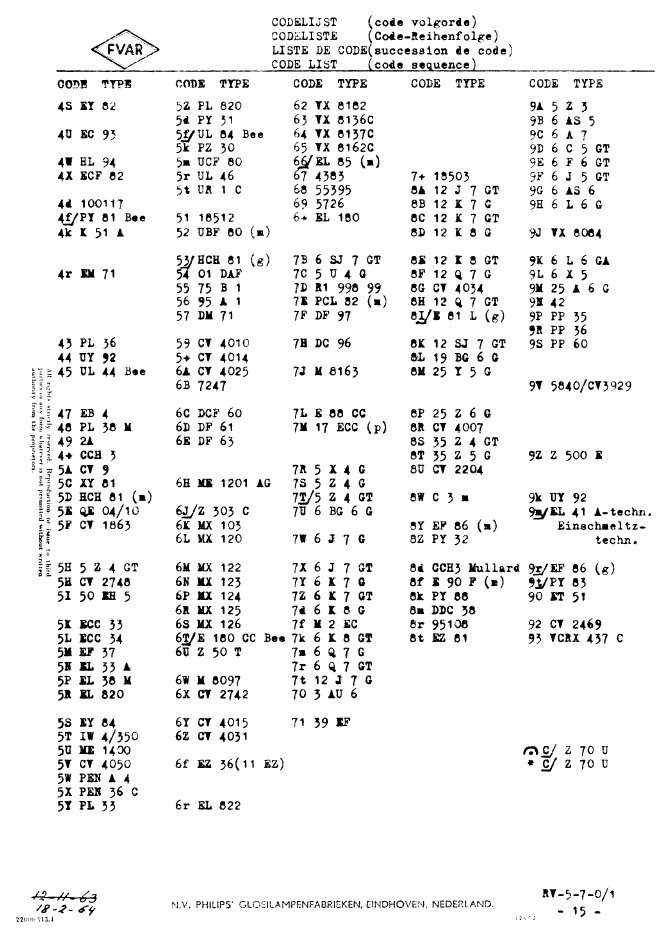Before 1957
Format: Tube_code, date_character // Factory_character, date_character
The first date code charter together with the second date code charter defined the year and mond !
First date code character limits the selection to a month in 3 possible years:

The second date code character limits the date to one year and month:

Examples:
mCA Delta + = December 1953 Philips Heerlen factory
mCN triangle D = April 1954 Philips Copenhagen
mCP # 7 = September 1956 Siemens Halske Munich
After 1956
Format: Tube_code, change_character // Factory_character, Date_character_year, Date_character_month, Date_character_week
Note: The week character was omitted in the beginning roughly till 1960.
Example:
Gf0 D0K = Gf > ECC82, 0 > change code 0, D > Valvo Hamburg, 0 > 1960, K > November
rX2 B2J5 = rX > EL84, 2 > change_code 2, B > Blackburn Mullard, 2J5 > 1962 October 5th week
Note: Siemens never used week codes. After ± 1968 Siemens used metal tags inside the tube on the getter support in which the code was stamped.
Factory codes
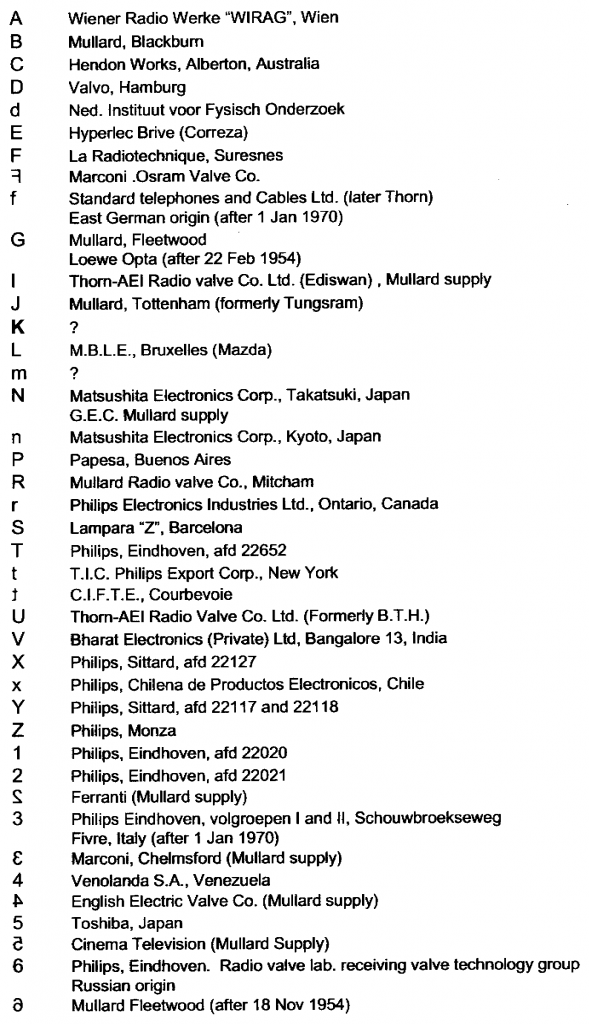
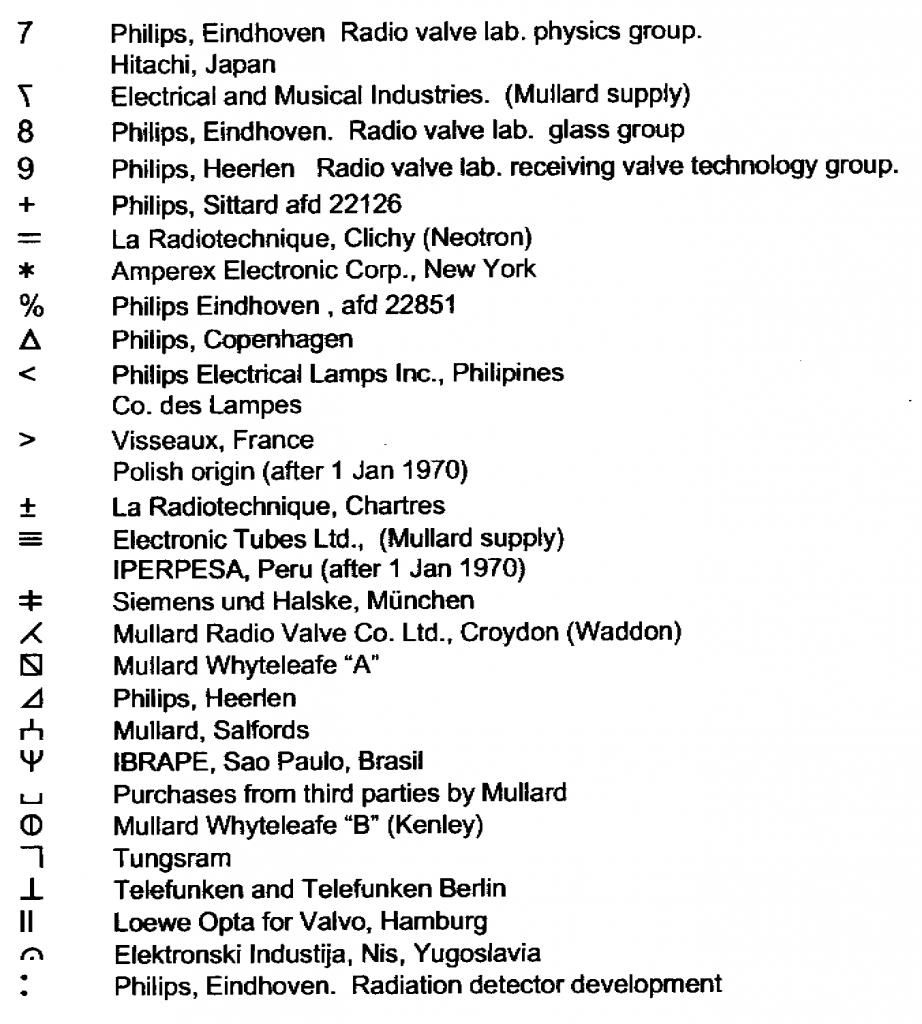
USA date codes & manufacturer codes
These are codes often seen stamped on components found in US made vintage tube equipment. This list is circa 1955, and some codes have been reassigned or added since that time.
Code formats were not completely standardized, but a little deciphering will generally yield the info of interest. Note that many makers also stamped OEM (Original Eqipment Manufacturer) part numbers above or below the EIA code, in some cases parts makers or the customer elected not to include the EIA codes, so not all parts have them.
They generally follow the following format: (example) 322 5904
where 322 is the manufacturer code (in this case Tungsol), 59 is the year (1959), and 04 is the week.
One alternate scheme is: 274 940
274 is the EIA code (RCA) 9 is the last digit of the year (in this case 1949). Usually single digit date codes are from the 1940’s, but have on occasion shown up in later decades, even up to the 1970’s. If one has a general idea of the age of the piece in question, usually the decade can be divined from that.
Another alternate is in the format following: 188-5 69 32
188 is General Electric. 5 is the plant code (in this case, Owensboro, Kentucky). 69 32 is 1969, 32nd week.
And another is like this: 322 6104-1
322 is Tungsol, 6104 is 1961, 4th week, 1 is the shift code (1 would probably be the day shift)
After about 1960, many tube manufacturers went to encrypted alphabetical date codes., such as: KE
The reason was purportedly to allow factories to track the dates of manufacture of defective tubes (especially important in the case of OEM customers that might send back entire batches of tubes), but avoid possible consumer complaints about “stale” tubes. This sounds perhaps a little silly since the shelf life of tubes is decades, at least (indefinite in practical terms), but some OEM’s might have beenn a bit irritated by occasional consumer complaints such as “my 1961 model TV has 1959 model tubes in it!”
Tubes made for the US military, or certain OEMs (such as some test equipment manufacturers) that requested it, continued to carry numerical date codes.
In years past, EIA (Electronic Industries Association) also went by the name of RETMA, and the original acronym of RMA (Radio Manufacturer’s Association).
EIA Code Lists for:
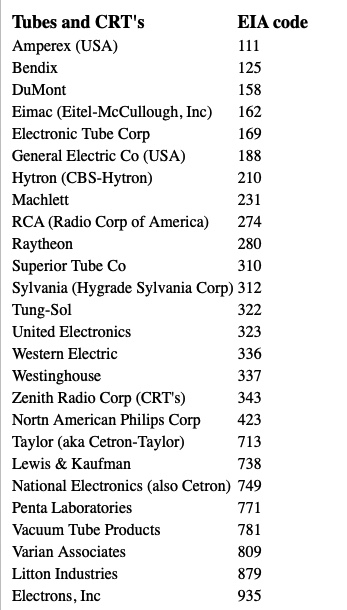
European tube codes
In case you have wondered what the E or the L in a EL34 stand for, I found a list of what the letter and number codes mean.
The first letter indicates the heater voltage or current:
A=4v
B=180ma
C=200ma
D=1.4v
E=6.3v
F=12.6v
G=5v……..
The 2nd letter indicates the type of tube:
A=diode
B=double diode
C=preamp triode
CC=double preamp triodes
D=power triode
E=preamp tetrode
F=radio signal pentode
H=hexode
K=octode
L=beam tetrode or power pentode……(I’ll skip up to Y)
Y= 1/2 wave rectifier
Z=full wave rectifier
Numbers from 30-40 are for octal mounting base
Numbers 80-90 are for 9 pin minature tubes
Thus EL34 is an octal base power pentode, with 6.3v heaters.
The EF68 is a radio signal pentode, with 6.3 volt heaters.
The ECC83 is a 9 pin minature w/ double triodes, and with 6.3 volt heaters.
The EL84 is a 9 pin minature power pentode, with 6.3 volt heaters
The GZ34 is an octal base full wave rectifier, with 5 volt heaters.
This system applies mostly to Mullard/Philips tubes or their derivatives. GEC/MOV, Mazda, Brimar, Miniwatt, and Telefunken …ect…may use different classification systems.
Tube code list
